Going absolutely bananas
This week: Knowing your limits; Autumnal days; Winterisation; Going absolutely bananas; Mapping temperatures in the polytunnel;
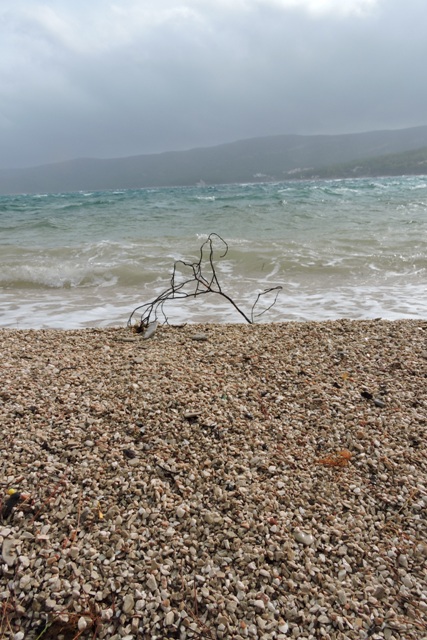
We have experienced some wild weather this week.
Temperatures have been mild with sunshine at the start of the week. Then today (Saturday) I have had the lights on the whole day.
The electricity has been going on and off since 05:00. However my UPS has kept the weather stations powered up.
There has been torrential rain, with an hourly rate of precipitation recorded as 180mm/hour. That is 180 litres per square metre, per hour.
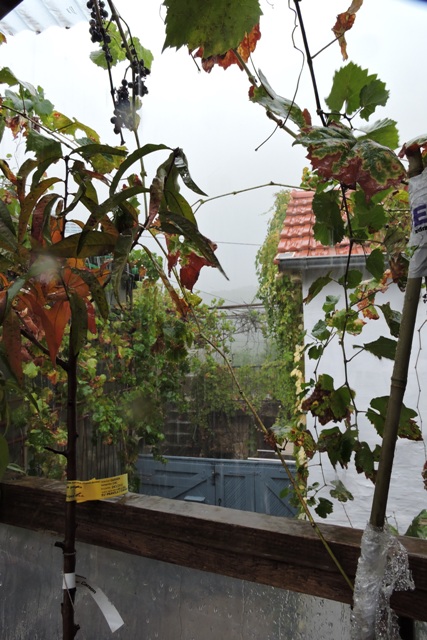
Early in the week I was “making things”. I built a hand held frame for a small dry-wipe board, using a piece of broom handle and some 10mm pegs.
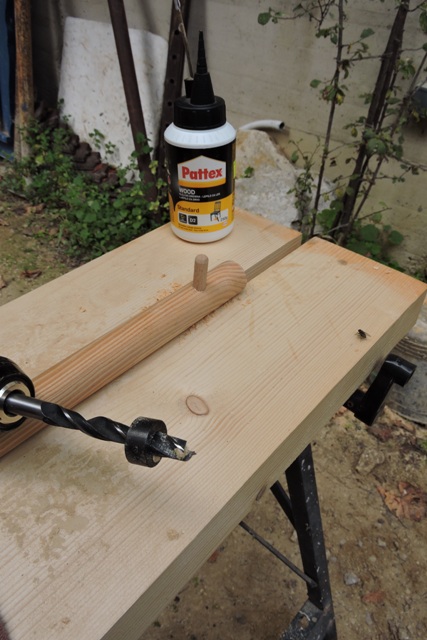
As well as the pegs, I also made a contoured hand grip, so it is comfortable to hold. A coat of varnish finished the project off.
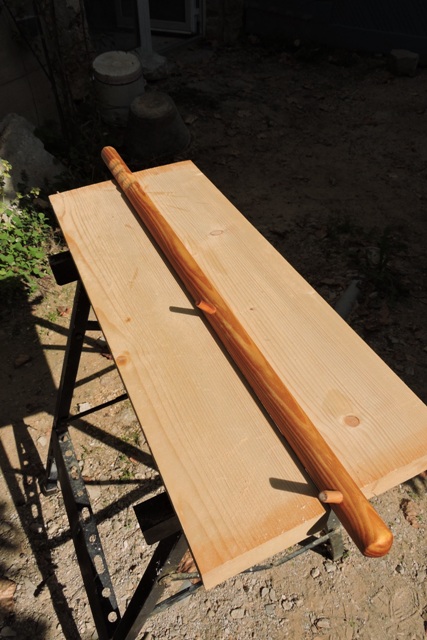
Another job has been to build some more roof supports for inside the polytunnel. I have used all my 2½ metre lengths of steel, so I had to join two shorter lengths with bolts.
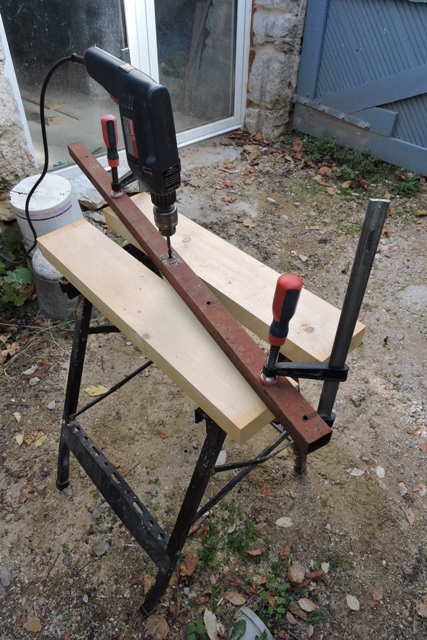
I was planning ahead for when I check the roof of the polytunnel and need to make sure the roof is well supported. The little work bench is a Black and Decker “Workmate”, with a new top.
It is light but strong and easy to move around. I find it is an indispensable tool.
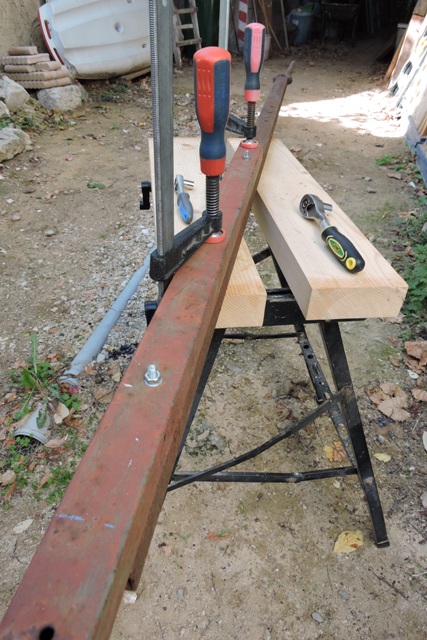
With the two sections bolted together, I moved the support down to the polytunnel.
Autumn is well and truly with us, but without the beautiful colours seen in the far north. This is the town of Pomfret, in the State of Vermont.

Here my plum trees have lost most of their leaves in the wind, but without the chang in colours.
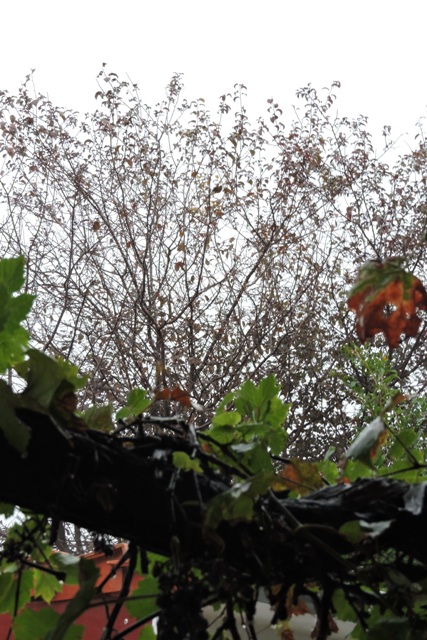
Knowing your limits
After working all Friday morning, with what I thought was a steady wind, I decided to take my sail and foil-board down to the bay where I usually go for water sports.
I checked the wind speed on a couple of other weather stations and they indicted twelve to fifteen knots, well within what I am comfortable with.
It took me a little over a half hour to load the board and my equipment and I drove the 10 kilometres to get there.
When I arrived, I was surprised to see waves with “white horses” where the wind was driving the top of the wave.
A check with my hand held anemometer, and it read +25 knots, so force 6 on the Beaufort scale, or more than 50 kph.
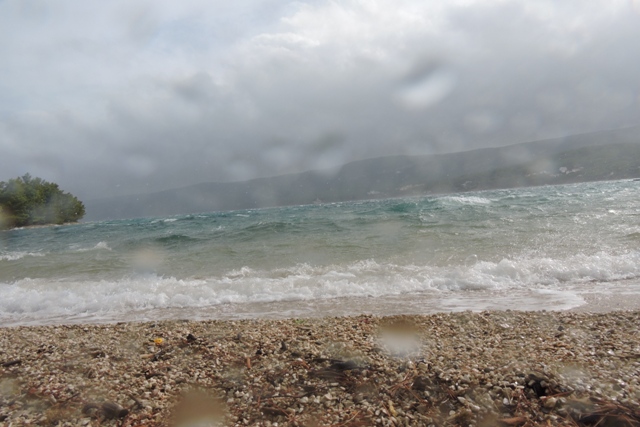
I decided that discretion being the better part of valour, I would just come home. There were people “flying” their dogs in the wind….

Once again, this is just not “normal” weather for October. But then, what is “normal” any more?
In a couple of weeks, the clocks will change here and what passes for winter will be upon us.
Autumnal days
Anticipating the wind and with a large crop of Mandarins on my trees, I picked six kilos of the ripest fruits. With all the rain we have had, it is an excellent year for my citrus orchard.
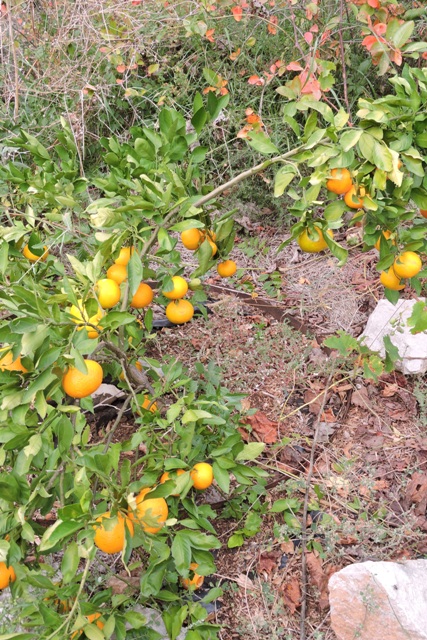
What I have realised is that although I purchased different named varieties, the two Mandarin trees are fruiting and ripening at the same time.
The mature Mandarin which was here when I moved in, and died in 2022 fruited much later, from November well into February.

True, these are still small trees and they grow slowly, but I needed some fruit trees which fruit later. This is so I have a source of citrus throughout the winter.
I ordered a number of trees to plant this winter, including a Clementine and a Tangerine. Both these fruit later, between December and January and February and March respectively.
I also ordered some Feijoa and two peach trees, to replace a peach and a nectarine which have died.
All the new trees were delivered this week.
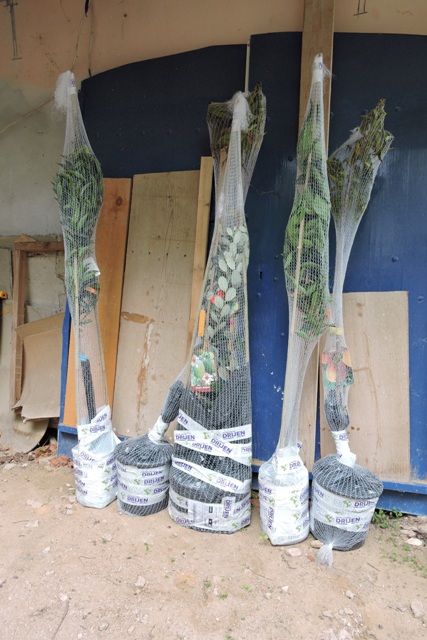
After unwrapping them and giving them some water, I placed them in my nursery area to acclimatise. I will be planting them in our late winter, which here usually means January.
Looking around, I was surprised to see that my Cosford Cob Nut has it’s first leaf buds. Clearly it thinks spring is here already!
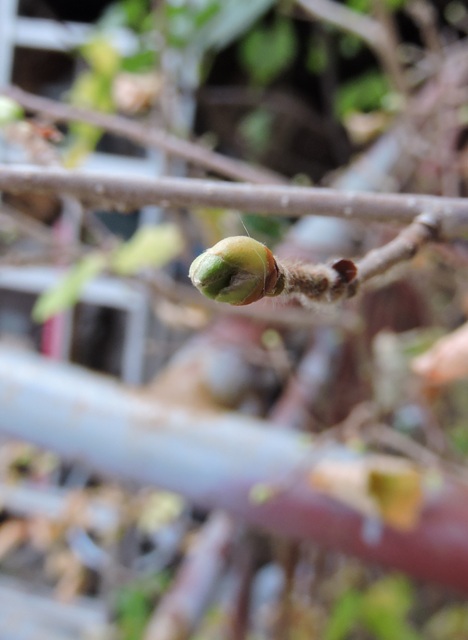
In the citrus orchard, I have a good crop of sweet Meyer lemons, but not many grapefruit this year.
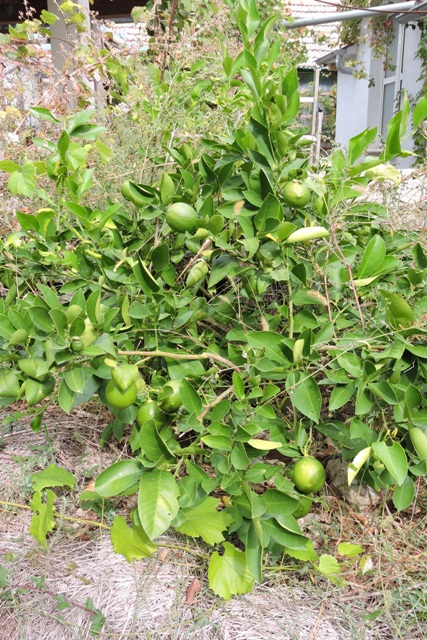
On the edge of the orchard, the Pomegranate tree is also laden with fruit, which I need to pick this next week.
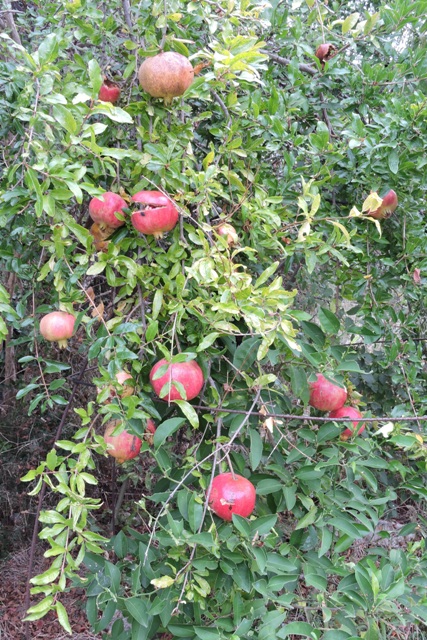
Winterisation
The weather forecast changed after my last blog. The rain was pushed back to today (Saturday) and instead, wind was forecast, as I mentioned above…
I was debating whether to fit the plastic over the bottom of the polytunnel, but when I looked closely some of the plastic channelling I had the battle with when I installed it last year has slipped.
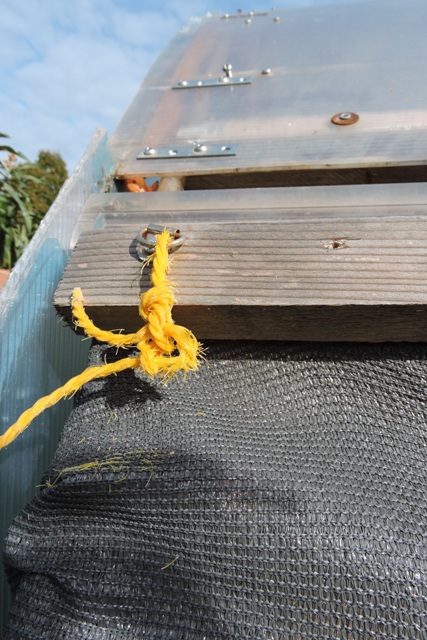
These gaps needed to be closed and held. I have some rolls of powder coated steel tape, so cut some lengths.
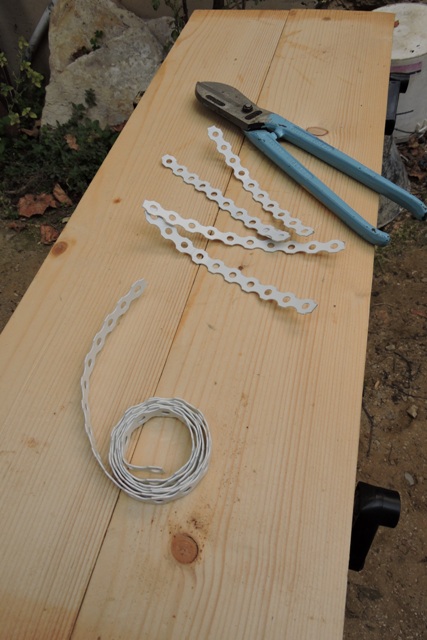
Using clamps I brought the timber batten attached to the plastic channelling up to the polycarbonate sheets and then fixed them in place.
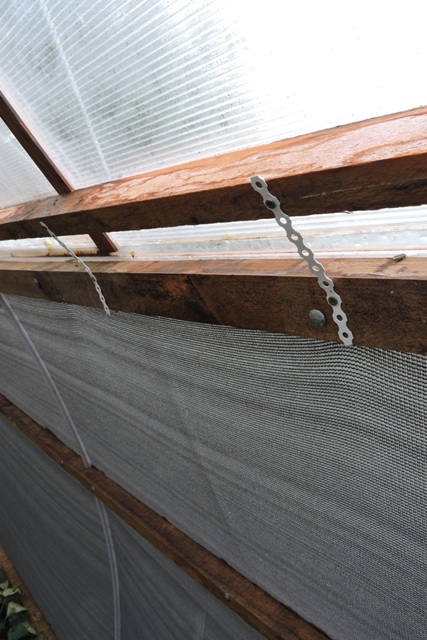
Something which I also discovered earlier in the year was how wind caused the whole structure to lift because it is flexible and freestanding.
Last winter I fixed diagonal bracing lines over the roof to keep everything in place.
However being made of nylon, they have all disintegrated in the strong Mediterranean sun.
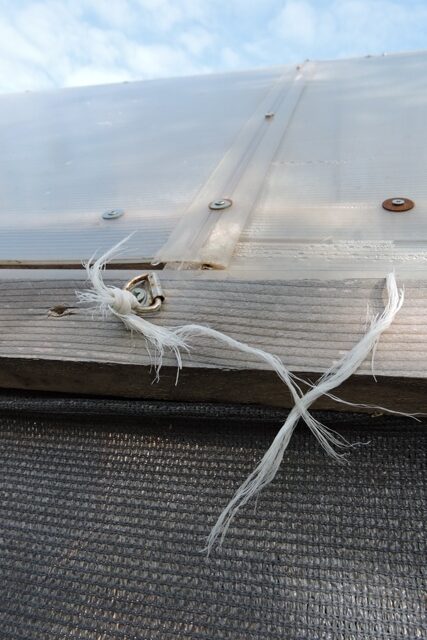
I bought 40 meters of yacht sail cord and after removing the remains of the decayed nylon, I installed the new securing lines.
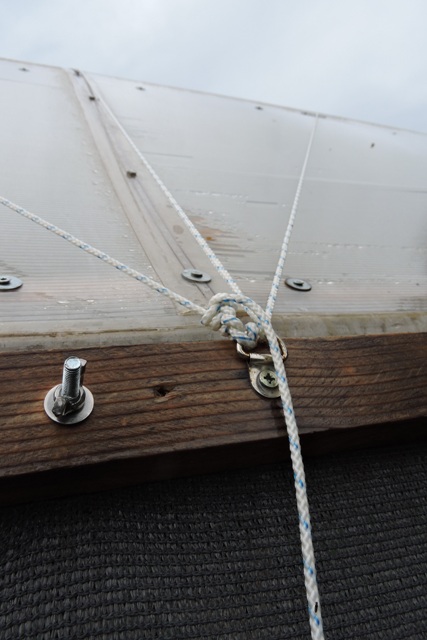
Overall I am delighted with the polytunnel, although after 12 months experience, I will do some things differently next year.
I am still harvesting fresh tomatoes every day, long after the outdoor tomatoes have finished, but for example, a raised bed down the centre of the polytunnel would make growing things a little easier.
Going absolutely bananas
I don’t often climb around the roof of my polytunnel, so when I was up, fixing the tensioning lines, I was surprised to see a bulge upwards in one of the polycarbonate sheets.
Going back inside I saw the reason. It’s the bananas which are, er, going absolutely bananas.
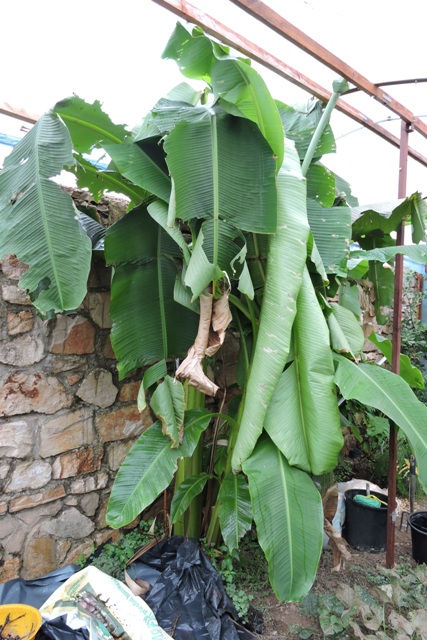
I have been focusing on weeds, tomatoes, herbs, Guavas and the like, and have just watered the bottom of the banana plant, letting it get on and do it own thing. That was a mistake!
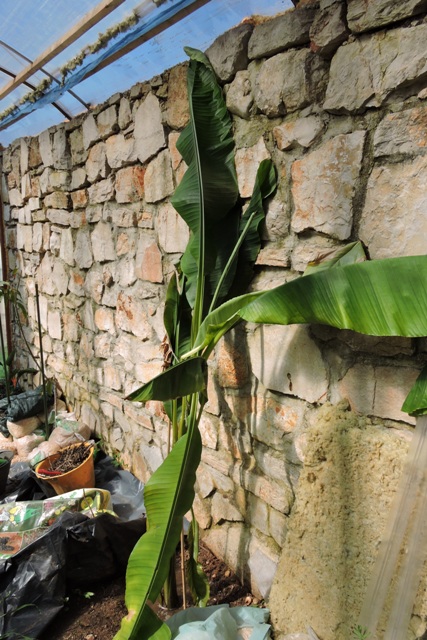
The parent plant has, rather like Topsy, just grown and grown and is now more than 2.6 metres tall and pushing the polycarbonste roof upwards.
Measuring the circumference of the main stem, it is 62 centimeters which gives a diameter of the stem as 20 cm. It is rather large, to say the least!

The variety is Dwarf Cavendish, and I really did not expect it to grow this big and it is still growing. Clearly the plant is happy where it is and likes the growing conditions.
I took to doing some radical surgery on the upper leaves because I am afraid that it will push the roofing sheet out of the mounting channels.
What I hope to do is to persuade the stem to bend over a bit.
Banana flowers appear from the centre of the main stem, they then take up to six months to ripen, at which point the stem dies and the pups, which have already appeared from the base, take over as new plants.
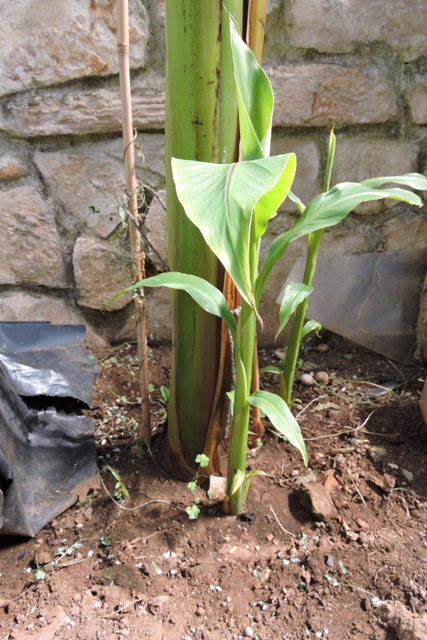
As the temperature falls, I’m not sure it will flower this year so I will just have to see…
Mapping temperatures in the polytunnel
It is less than a year since I built and finished the polytunnel.
Then I installed my new weather station, which included a sensor for the polytunnel. This has been operational since 12th December, so for slightly more than 10 months.
Like all the sensors, I record the readings on a spreadsheet to chart maximum, minimum and mean temperatures, the 11 day running average and similar humidity readings.
My new station records 288 data points every day, that is every five minutes, of every day, for every sensor and reading.
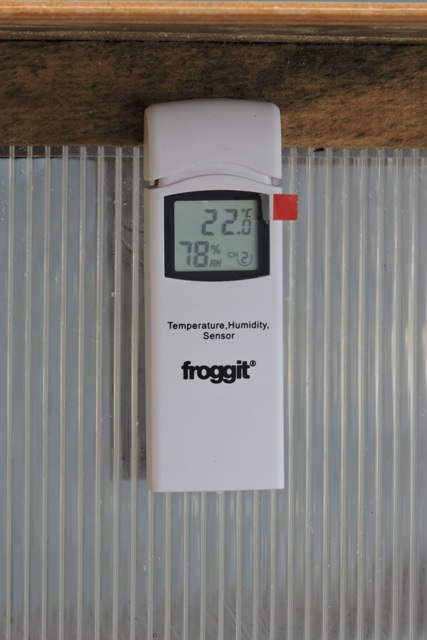
The “mean” temperature is the sum of all 288 temperatures (the recorded temperature), divided by 288 to give a very accurate mean/average.
The minimum international standard is the sum of just 4 data points, taken at 01:00, 07:00, 13:00 and 19:00 daily, divided by four.
When I was entering the data into my excel spreadsheet, there was up to three degrees of temperature difference between the minimum 4 data points average, the the mean of 288 data points in a day.
That is a lot of difference over a year.
What this means is that in summer, when temperatures are higher during the long days, the mean temperature is higher because of more hours at higher temperatures. The reverse applies in winter.
Why is this important? Well, because scientifically the 11 day running average is the significant temperature which affects plant growth, flowering and fruiting.
One day of low temperatures will not significantly affect the 11 days average, which is a longer term trend.
Every day this week when I have sat down for coffee, I have been building the spreadsheet, adding formulae and data. I still have a couple more hours of work to do before I can produce the first visual charts. NCG